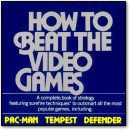The Invention of the Video Game Cartridge
Thursday, January 22nd, 2015Three and a half years ago, I started writing a history of the Fairchild Channel F, the world’s first commercial game console to use software cartridges. As part of the research, I first interviewed two Fairchild veterans to follow up on my 2009 interview of Jerry Lawson.
As I kept digging, the rabbit hole of history went deeper and deeper, and the story turned out too complex and nuanced to properly research for whatever venue I was planning at the time. Budgets were tight, and the economics didn’t work out, so I had to shelve it.
Just last year, I picked up where I left off and did the rest of the legwork, summoning primary source documents from around the world (special thanks to ICHEG) and interviewing over 15 people who worked for Alpex, National Semiconductor, Fairchild, Atari, and RCA to piece together the most accurate portrait of the birth of the game cartridge that I could possibly manage.
The result was finally published last night — in a somewhat abridged format — on FastCompany.com with my friend and longtime collaborator Harry McCracken editing the piece.
What I have created sheds light on a heretofore completely unknown segment of video game history (especially regarding Alpex), and it is my hope that I have done so in a way that does justice to the achievement of those involved some forty years ago.
I am grateful to everyone who helped with my research — especially Ron Smith, the mechanical designer of the Channel F, who provided me with countless documents and a patient ear for all of my questions, and Wallace Kirschner and Lawrence Haskel, who decided to talk to the press for the first time ever for my piece.
There is more to the story than could fit in the article, but don’t despair — it will probably end up as part of a book.
I hope you enjoy the piece.























